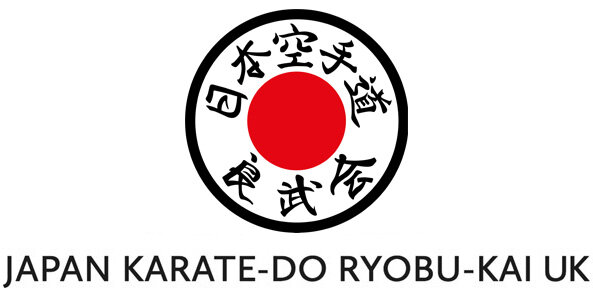Morihei Ueshiba Sensei (1883–1969)
Konishi Soke and his wife also studied under Morihei Ueshiba, who was still teaching Daito Ryu Aikijutsu at that time. Konishi Sensei considered Ueshiba Sensei to be the best martial artist he had ever known. Konishi Soke carried this opinion throughout his lifetime.
Having already trained in karate for a number of years, Konishi Soke demonstrated the kata Heian Nidan (which he learned from Funakoshi Sensei) to Ueshiba Sensei. However, Ueshiba Sensei remarked that Konishi Soke should drop such nonsense for such techniques are ineffective. This comment came as a blow, since Konishi Soke believed in karate and that held Ueshiba Sensei's opinions in the highest regard. Konishi Soke felt that karate still had much value and that he had the responsibility to develop it. Thus, he requested that he be allowed to continue training in karate, intending to develop the techniques so that it would be acceptable to the great teacher.
After many months of research and training, Konishi Sensei developed a kata called Tai Sabaki (Body Movement). He based this kata on karate, but incorporated principles found in the teachings of Ueshiba Sensei. Though the new kata did not contain any complex movements, it consisted of a chain of actions, with no pause after each action. After the demonstration of this kata by Konishi Soke, Ueshiba Sensei remarked that, "The demonstration you did just now was satisfactory to me, and that kata is worth mastering." Later, Konishi Soke developed two other kata based on the principles of Tai Sabaki. The three kata became known as Tai Sabaki Shodan, Tai Sabaki Nidan, and Tai Sabaki Sandan.
Seiryu Kata
In about 1935, Konishi Soke developed another kata, Seiryu. During this period, Konishi Soke, Ueshiba Sensei, Mabuni Sensei, and Ōtsuka Sensei were training together almost daily. At this time, the Japanese government was controlled by top officers of the Imperial Army. Konishi Soke was asked by the commanding general of the Japanese Army to develop women's self-defence techniques mainly for the ladies working on the government railway system. His first step in fulfilling the Army's request was to ask Mabuni Sensei to help him develop standardised training methods, to help the students remember the techniques.
Together, they developed a karate kata that incorporated the essence of both their styles. As they worked to finalize the kata, they shared it with Ueshiba Sensei, who approved some sections, but advised certain changes. Ueshiba Sensei strongly felt that the kata should be modified based on the gender of the practitioner, because of the need to protect very different sensitive areas. Also, a woman's training was normally executed from a natural (higher) stance. Another factor which greatly influenced the kata was the female position in Japanese society. At the time, a woman's life was defined by cultural customs, though both sexes wore kimono and used geta. All these factors were considered in the process of developing the kata.
As a result of the collaboration between three great masters, the Seiryu kata, contained the essence of both aikido and jujutsu, going with the force instead of directly opposing an opponent's attack. Ryu means willow in English, and just like a willow will bend with the wind, so should the martial artist practicing this kata. The term also implies great strength, for the willow does not break under the force of the wind. The kanji for this kata may also be pronounced Aoyagi.
As Japan prepared for an upcoming war with the United States, public interest in budo ballooned. Along with other budo masters, Funakoshi, Motobu, Mabuni, Otsuka, and Konishi instructed in military schools. However, in the age of modern-day warfare, budo was primarily to give solders the strength to face fear of death.
After only 15 years of Emperor Taisho's reign, Emperor Showa (known to Westerners as Emperor Hirohito) acceded to the throne in 1926 at age 25. However, increasing right-wing movement and military intervention into politics pushed Japan to gradually move away from democracy and parliamentarianism toward militarism, totalitarianism, and expansionism. By means of assassination and intimidation, the Japanese military took control of the parliament.
In 1942, the military regime took over the Dai Nippon Butokukai and restructured it as a military-dictated national budo organization. However, the new Butokukai (also referred to as "Tojo Butoku-kai") failed to obtain the support of individual budo federations, and expansion of the War made it impossible to hold seminars or competitions.
The Allied Occupation directed by General Douglas MacArthur pushed through a sweeping series of reforms including the disarmament of the military, a new constitution, land reforms, the dismemberment of zaibatsu (plutocracy), and major changes in legal codes. The Dai Nippon Butokukai was ordered to dissolve, and all martial arts were temporarily banned, with the exception of sumo.
Konishi Soke and the Ryōbukan survived the War which destroyed most of Japan and killed many devoted martial artists. As post-war chaos was replaced by rapid economic growth, Konishi Soke worked hard to revive both kendo and karate-jutsu.

